Alessandro Nordio
Information Retrieval in the Age of Generative AI: The RGB Model
Apr 29, 2025Abstract:The advent of Large Language Models (LLMs) and generative AI is fundamentally transforming information retrieval and processing on the Internet, bringing both great potential and significant concerns regarding content authenticity and reliability. This paper presents a novel quantitative approach to shed light on the complex information dynamics arising from the growing use of generative AI tools. Despite their significant impact on the digital ecosystem, these dynamics remain largely uncharted and poorly understood. We propose a stochastic model to characterize the generation, indexing, and dissemination of information in response to new topics. This scenario particularly challenges current LLMs, which often rely on real-time Retrieval-Augmented Generation (RAG) techniques to overcome their static knowledge limitations. Our findings suggest that the rapid pace of generative AI adoption, combined with increasing user reliance, can outpace human verification, escalating the risk of inaccurate information proliferation across digital resources. An in-depth analysis of Stack Exchange data confirms that high-quality answers inevitably require substantial time and human effort to emerge. This underscores the considerable risks associated with generating persuasive text in response to new questions and highlights the critical need for responsible development and deployment of future generative AI tools.
Uplink soft handover for LEO constellations: how strong the inter-satellite link should be
Mar 22, 2024Abstract:We consider a constellation of low-earth-orbit (LEO) satellites connected to a handheld device on the ground. Due to the very large orbital speed, an effective handover strategy becomes of paramount importance. In particular, we study the benefits of soft handover in the uplink from the physical-layer point of view. We give a realistic model for both the ground-to-satellite and the inter-satellite links, following the 3GPP channel model for the former. We suppose that, during handover from a serving satellite to a target satellite, one of the two satellites forwards the received signal from the ground user to the other, thus acting as a relay. We quantify through simulations the loss of hard handover, compared to soft handover. For the latter, we test both amplify-and-forward (AF) and decode-and-forward (DF) relaying techniques and verify that, at least in the simulated conditions, DF does not repay, in terms of block error rate (BLER), the increase of complexity with respect to AF. Also, we study the effect of the LEO constellation size on the network BLER. Finally, we show that, with soft handover, the impact of misalignment on the inter-satellite link is severe, especially at optical frequencies.
IRS Configuration Techniques for Ultra Wideband Signals and THz Communications
Jan 10, 2024



Abstract:Motivated by the challenges of future 6G communications where terahertz (THz) frequencies, intelligent reflective surfaces (IRSs) and ultra-wideband (UWB) signals coexist, we analyse and propose a set of efficient techniques for configuring the IRS when the signal bandwidth is a significant fraction of the central frequency (up to 50%). To the best of our knowledge this is the first time that IRS configuration techniques are analyzed for such huge bandwidths. In our work we take into account for the channel model, the power spectral density of the signal reflected by the IRS and the network geometry. We evaluate the proposed solutions in terms of achievable rate and compare it against an upper bound we derived. Our results hint rules for designing IRS-aided communication systems and allow to draw conclusions on the trade-off between performance and complexity required for configuring the IRS.
Robust Localization and Tracking of UAVs in OTFS-based Networks
Nov 29, 2023



Abstract:We consider the problem of accurately localizing N unmanned aerial vehicles (UAV) in 3D space where the UAVs are part of a swarm and communicate with each other through orthogonal time-frequency space (OTFS) modulated signals. Each receiving UAV estimates the multipath wireless channel on each link formed by the line-of-sight (LoS) transmission and by the single reflections from the remaining N-2 UAVs. The estimated power delay profiles are communicated to an edge server, which is in charge of computing the exact location and speed of the UAVs. To obtain the UAVs locations and velocities, we propose an iterative algorithm, named Turbo Iterative Positioning (TIP), which, using a belief-propagation approach, effectively exploits the time difference of arrival (TDoA) measurements between the LoS and the non-LoS paths. Enabling a full cold start (no prior knowledge), our solution first maps each TDoA's profile element to a specific ID of the reflecting UAV's. The Doppler shifts measured by the OTFS receivers associated with each path are also used to estimate the UAV's velocities. The localization of the N UAVs is then derived via gradient descent optimization, with the aid of turbo-like iterations that can progressively correct some of the residual errors in the initial ID mapping operation. Our numerical results, obtained also using real-world traces, show how the multipath links are beneficial to achieving very accurate localization and speed of all UAVs, even with a limited delay-Doppler resolution. Robustness of our scheme is proven by its performance approaching the Cramer-Rao bound.
Ranking a Set of Objects using Heterogeneous Workers: QUITE an Easy Problem
Oct 03, 2023Abstract:We focus on the problem of ranking $N$ objects starting from a set of noisy pairwise comparisons provided by a crowd of unequal workers, each worker being characterized by a specific degree of reliability, which reflects her ability to rank pairs of objects. More specifically, we assume that objects are endowed with intrinsic qualities and that the probability with which an object is preferred to another depends both on the difference between the qualities of the two competitors and on the reliability of the worker. We propose QUITE, a non-adaptive ranking algorithm that jointly estimates workers' reliabilities and qualities of objects. Performance of QUITE is compared in different scenarios against previously proposed algorithms. Finally, we show how QUITE can be naturally made adaptive.
Ranking a set of objects: a graph based least-square approach
Feb 26, 2020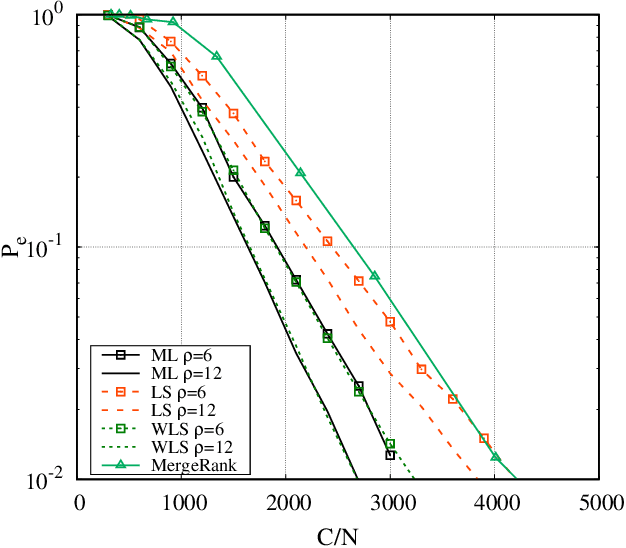
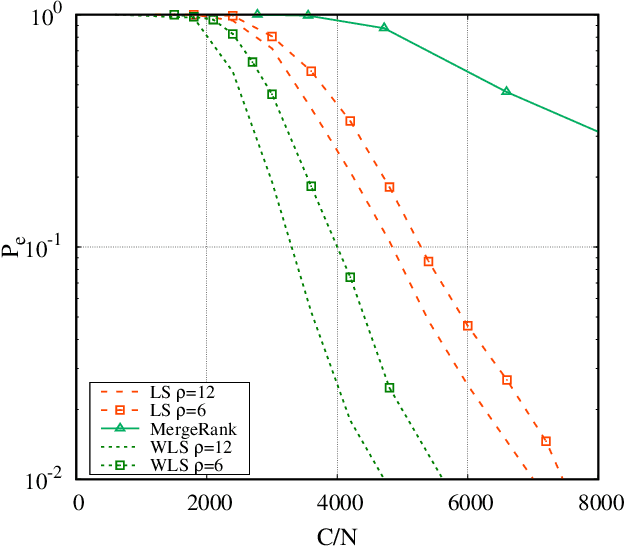
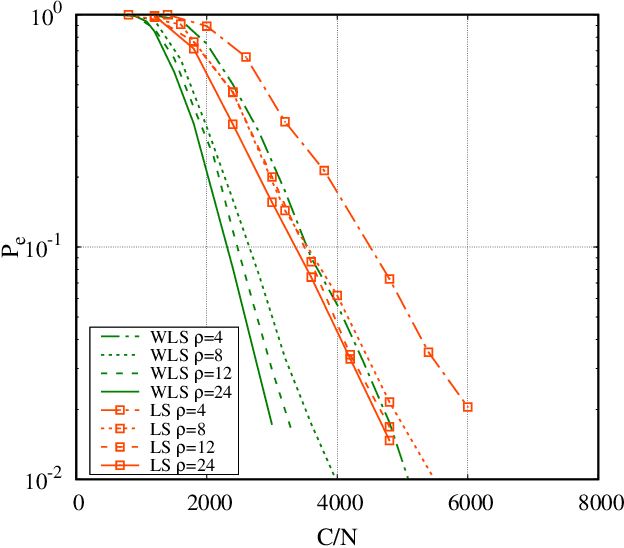
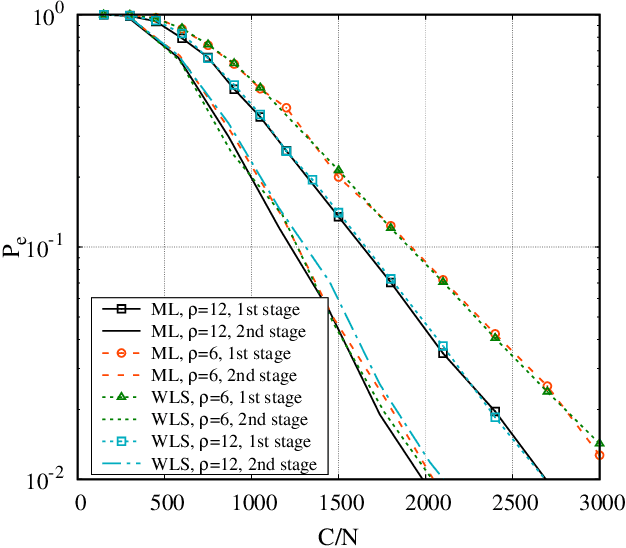
Abstract:We consider the problem of ranking $N$ objects starting from a set of noisy pairwise comparisons provided by a crowd of equal workers. We assume that objects are endowed with intrinsic qualities and that the probability with which an object is preferred to another depends only on the difference between the qualities of the two competitors. We propose a class of non-adaptive ranking algorithms that rely on a least-squares optimization criterion for the estimation of qualities. Such algorithms are shown to be asymptotically optimal (i.e., they require $O(\frac{N}{\epsilon^2}\log \frac{N}{\delta})$ comparisons to be $(\epsilon, \delta)$-PAC). Numerical results show that our schemes are very efficient also in many non-asymptotic scenarios exhibiting a performance similar to the maximum-likelihood algorithm. Moreover, we show how they can be extended to adaptive schemes and test them on real-world datasets.
Selecting the top-quality item through crowd scoring
Oct 02, 2017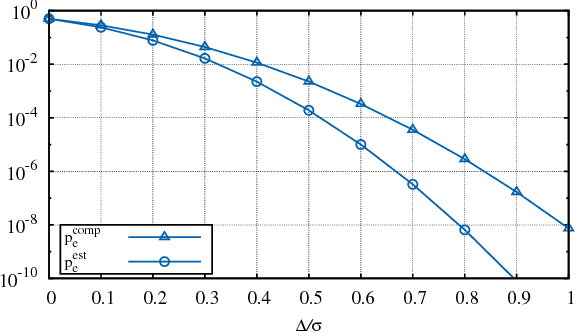
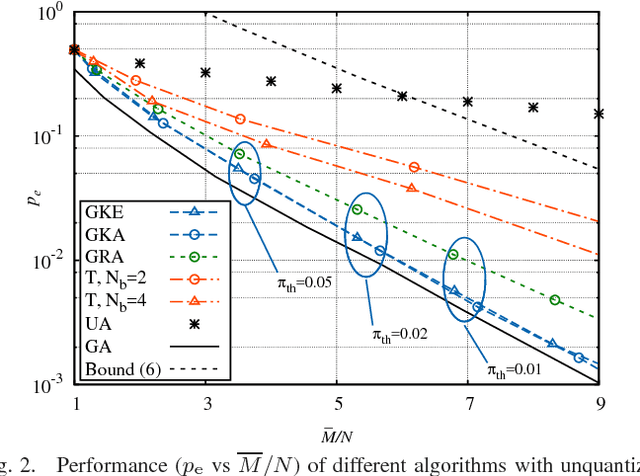
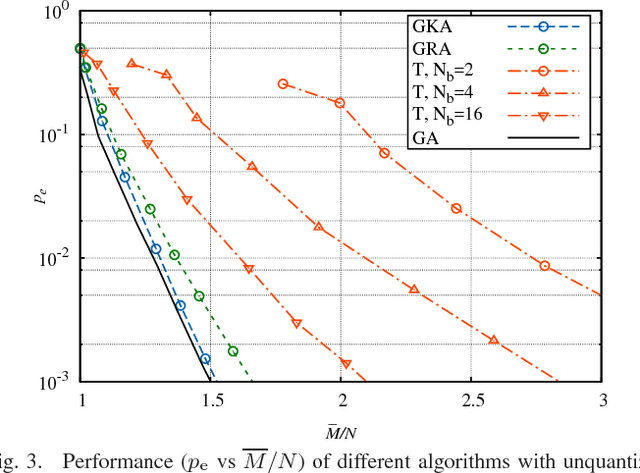
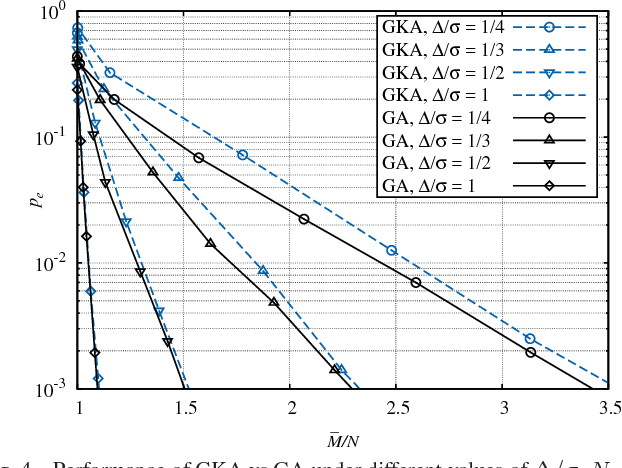
Abstract:We investigate crowdsourcing algorithms for finding the top-quality item within a large collection of objects with unknown intrinsic quality values. This is an important problem with many relevant applications, for example in networked recommendation systems. The core of the algorithms is that objects are distributed to crowd workers, who return a noisy and biased evaluation. All received evaluations are then combined, to identify the top-quality object. We first present a simple probabilistic model for the system under investigation. Then, we devise and study a class of efficient adaptive algorithms to assign in an effective way objects to workers. We compare the performance of several algorithms, which correspond to different choices of the design parameters/metrics. In the simulations we show that some of the algorithms achieve near optimal performance for a suitable setting of the system parameters.
 Add to Chrome
Add to Chrome Add to Firefox
Add to Firefox Add to Edge
Add to Edge